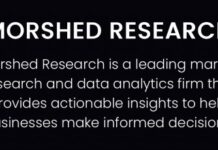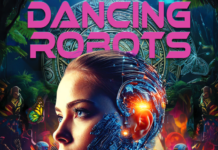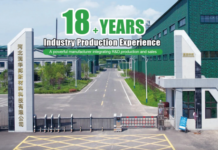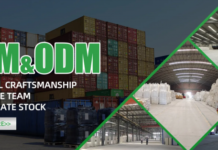A Leading Voice Argues for Mutual Benefits, Fostering a New Era of Creativity and Economic Growth
(Isstories Editorial):- Birmingham, Alabama Sep 17, 2025 (Issuewire.com) – In the heart of many cities, a curious and often overlooked divide exists between two dynamic sectors: the fast-paced, data-driven world of technology and the expressive, human-centered realm of the arts. While they may seem like opposing forces, Suha Atiyeh, a prominent figure at Innovation Depot, believes this division is not only artificial but also a missed opportunity for both sides.
More on Isstories:
- SYZMIK Sports Teams Up with Green Bay Packers to Provide X7C Headbands to Wisconsin Girls Flag Football Programs
- Posh Multiverse Makes History as the First Avatar to Collaborate with the WNBA and Chicago Sky
- Michigan Ranks #5 in the U.S. for Dentist Demand in 2025
- David Reynard’s Memoir Stronger than Before Tells the Story of Beating the Odds
- Dr. Muriam Cinevert’s Girl, Just Show Up Heads to Ghana for the High Tea Women’s Conference
Drawing on her unique perspective and her deep involvement with the local arts non-profit community, Atiyeh argues that a deliberate and thoughtful collaboration between the tech startup scene and the local arts community can unlock a new era of creativity, foster innovation, and fuel sustainable economic growth. This isn’t just a feel-good initiative; it’s a strategic imperative.
The Arts as an Engine for Innovation
For too long, the arts have been viewed as a cultural amenity–a nice-to-have, but not a core component of a city’s economic engine. Atiyeh fundamentally disagrees with this perspective. She believes the arts are a critical source of inspiration and a laboratory for creative problem-solving. Artists are, by their very nature, innovators. They are constantly pushing boundaries, experimenting with new forms, and challenging conventional thinking.
When tech companies collaborate with artists, they are exposed to new ways of thinking that can disrupt their own processes. A software company, for example, might partner with a sculptor to visualize complex data in a more intuitive, three-dimensional way. A game development studio could work with a local playwright to create more compelling and emotionally resonant narratives. This cross-pollination of ideas can lead to breakthroughs that would not have been possible in a purely technical environment.
The arts community also teaches the value of iteration and resilience, two qualities that are essential in the startup world. An artist doesn’t create a masterpiece on the first try; they sketch, revise, and refine their work over and over again. This process is a perfect parallel to the agile development cycles and iterative product launches that define successful tech companies.
Beyond the aesthetic, the arts provide a crucial human element that is often missing in the tech world. They ground companies in a sense of place and purpose, reminding them that their work exists within a broader social and cultural context. This human-centric approach is vital for building trust and relevance with customers.
Tech as an Amplifier for the Arts
Conversely, the tech sector offers powerful tools and platforms that can help the arts community reach new audiences and achieve financial sustainability. Many artists and arts organizations struggle with marketing, audience development, and securing funding. Technology can provide solutions to these long-standing challenges.
A local theatre company, for instance, might use data analytics to better understand its audience and tailor its marketing campaigns. A visual artist could leverage e-commerce platforms and social media to sell their work to a global audience, bypassing the traditional gallery system. Virtual reality and augmented reality technologies offer artists entirely new mediums for expression, allowing them to create immersive experiences that defy the limitations of physical space.
Moreover, the tech community can provide valuable skills, mentorship, and resources that can help artists and arts organizations professionalize their operations. Startups can offer expertise in areas like financial management, branding, and digital strategy, helping arts non-profits run more efficiently and effectively. This support can be transformative, allowing artists to focus on what they do best: creating.
Creating a Collaborative Ecosystem
The key to a successful partnership between these two sectors is to create a deliberate and collaborative ecosystem. This requires more than just a single event or a one-off project. It requires a dedicated effort to build bridges and foster ongoing dialogue. Innovation Depot, as a hub for both tech and community, is uniquely positioned to lead this effort.
Atiyeh suggests that incubators and accelerators should actively seek out artists-in-residence programs, where creators are given space and resources to work alongside tech entrepreneurs. Events like “Art + Tech Demo Days,” where artists showcase their projects to investors and tech leaders, can open doors to new funding and partnerships. Mentorship programs, where tech executives are paired with emerging artists, can provide invaluable guidance and support.
These initiatives can help break down the cultural barriers that often separate these two communities. They can create a shared language, build mutual respect, and foster a sense of collective purpose. The goal is to move from a transactional relationship to a truly symbiotic one, where both sides are enriched by the collaboration.
The Benefits to a City
When the tech and arts sectors thrive in collaboration, the entire city benefits. A vibrant arts scene makes a city a more attractive place to live and work, helping to attract and retain top tech talent. A city with a strong creative identity is also more appealing to investors and entrepreneurs. It sends a message that this is a place where innovation and culture are equally valued.
This collaborative model also promotes a more equitable and inclusive economy. The arts community often provides opportunities for people from diverse backgrounds, and by connecting them to the tech sector, we can create new pathways for economic mobility. It’s about building an economy that is not just prosperous, but also rich in culture, creativity, and opportunity for all.
A Bold Vision for the Future
Suha Atiyeh‘s vision is a bold one, but it is also grounded in the practical realities of urban development and economic growth. She sees a future where the arts are not just a spectator sport but an active participant in the city’s innovation ecosystem. A future where technology is not a cold, impersonal force, but a powerful tool for human expression and connection.
This is not a matter of one sector dominating the other. It is about recognizing that our most pressing challenges–from urban development to social inequality–require a fusion of technical expertise and creative thinking. It is about building a city where the code is as beautiful as the canvas, and where every startup and every artist feels they are part of a shared mission to build a better community.
About Suha Atiyeh:
Suha Atiyeh is a thought leader and advocate for sustainable and community-driven innovation. With a background in marketing and a passion for strategic brand development, she has dedicated her career to building resilient, human-centered brands and communities. Her work spans both the private and public sectors, focusing on leveraging technology to foster authentic human connection. She is a prominent voice in discussions about the future of work and the role of technology in fostering authentic human connection.
Media Contact:
Suha Atiyeh
Email: [email protected]
Website: https://suha-atiyeh.com/
This article was originally published by IssueWire. Read the original article here.

































